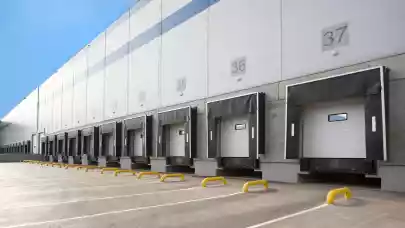
A quarter of all modern warehouse and industrial space in Poland was transacted in 2020, says real estate advisory firm Savills in its latest report. Despite the pandemic, take-up hit record levels last year, reaching more than 5 million sqm, while Poland’s total logistics stock surpassed the 20 million sqm mark.
According to Savills data, close to 2 million sqm of warehouse and industrial space came on stream in 2020, bringing Poland’s total stock to 20.7 million sqm. The nation’s five core markets (Warsaw, Upper Silesia, Central Poland, Wrocław, and Poznań) account for almost 80% of the total existing warehouse stock, but Tricity and Western Poland are also growing in strength.
The largest industrial completion of 2020 was Panattoni’s A2 Warsaw Park, whose total area exceeds 100,000 sqm. Panattoni is also developing a project in Świebodzin which will be almost twice as big and is the largest scheme currently under construction.
“Tenants looking for warehouse and industrial space now have a wide choice of product offered by developers who continued to deliver new projects to the market in recent months despite the pandemic. Limited speculative construction has, however, led to fewer facilities being available for immediate occupation. It is, therefore, advisable to commence acquisitions of warehouse and industrial locations well in advance,” says Kamil Szymański, Head of the Industrial Agency at Savills.
Demand for warehouse and industrial space was not slowed down by the economic downturn caused by the pandemic. On the contrary, annual take-up set all-time high with 5.2 million sqm transacted (up by 27% year-on-year), driven the expansion of e-commerce and robust leasing activity of large food retailers, logistics operators and courier companies.
At the start of the pandemic it was feared that leasing activity would focus on regearing, but this downside scenario did not materialise, reveals Savills latest report. Net take-up, exclusive of renegotiations, also hit its highest level in the history of the Polish industrial market.
“A relatively sharp quarterly increase in new supply pushed the overall vacancy rate up temporarily during the summer holiday period. The new supply was, however, absorbed by the market in the last quarter of the year. The last three months of 2020 saw the lowest annual completion total since the second quarter of 2017. Despite the pandemic and developers being slightly more cautious about commencing speculative construction, the market maintains its momentum. At the end of 2020, the development pipeline was close to the average for the last three years, which witnessed a particularly strong growth in warehouse supply", adds Kamil Szymański.
The industrial market vacancy rate fell to 6.5% at the end of December 2020. Rental rates remained largely unchanged compared with year-end 2019. Headline rents edged up in Warsaw Zone 1 and in Central Poland, but recorded some downward movement in Upper Silesia. Average base rents were at €2.70–4.40/sqm/month for big-box facilities and at up to €5.50/sqm/month for small business units (SBUs).
“The industrial market demonstrated its strong fundamentals in 2020. We should remember, however, that many companies are now operating in a very uncertain environment. On the other hand, the lockdown and retail restrictions spurred further growth in e-commerce. Some companies that delayed going online are now choosing to invest in e-retailing and those present in this channel are reporting considerable growth. Assuming the pandemic situation normalises, the impressive growth story of the logistics sector is likely to continue throughout 2021,” concludes Kamil Szymański, Savills.



